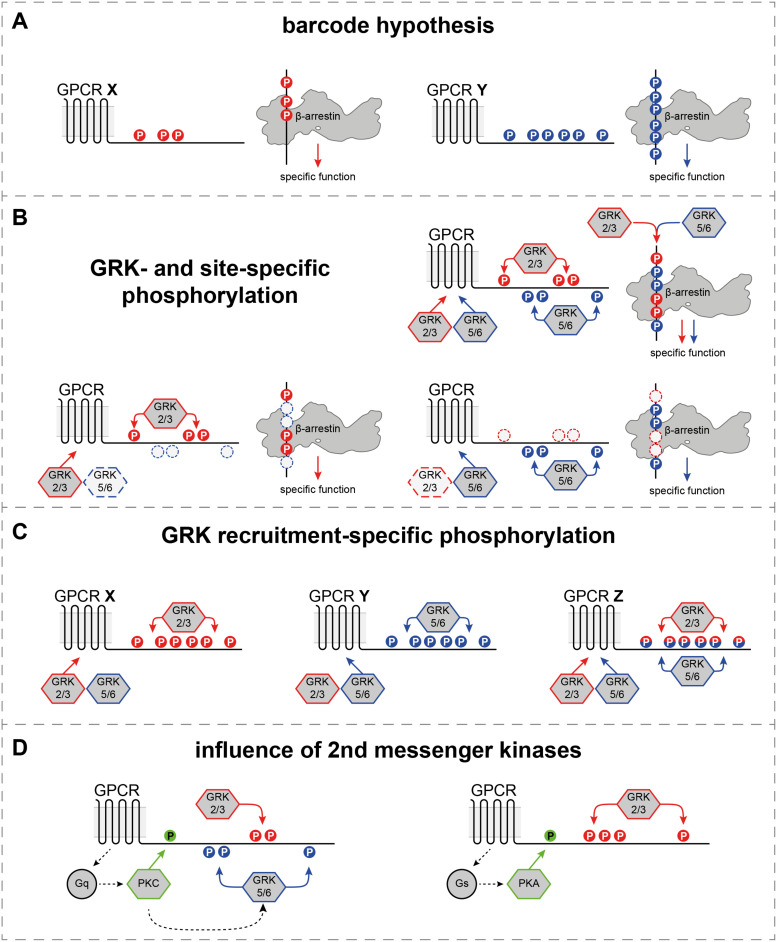FIGURE 2.
Differential and GRK-specific GPCR phosphorylation induces distinct β-arrestin mediated functions. (A) The most straightforward way to interpret the “barcode” hypothesis, as different GPCRs feature different C-terminal phosphorylation patterns to induce distinct β-arrestin functions. (B) Individual GRK isoforms or families (GRK2/3 or GRK5/6) have been shown to preferentially phosphorylate specific sites at different GPCR C-termini (Nobles et al., 2011; Doll et al., 2012; Miess et al., 2018). Depending on the availability of kinases in a cellular system, the same GPCR could be phosphorylated by GRK2/3 or GRK5/6 only, to induce specific functions, or by all GRK isoforms to achieve the activation of all possible β-arrestin functions. (C) Certain GPCRs have been shown to be functionally phosphorylated by GRK2/3 only, or GRK2/3/5/6 (Drube et al., 2021). This might constitute another layer of coupling preference at the foundation of the “barcode” hypothesis. (D) Second messenger kinases, like PKC and PKA are activated by the primary G protein signaling and have been shown to phosphorylate GPCRs directly. Additionally, they are able to modulate the activity of certain GRK isoforms or families (Chuang et al., 1995; Winstel et al., 1996; Pronin and Benovic, 1997).

